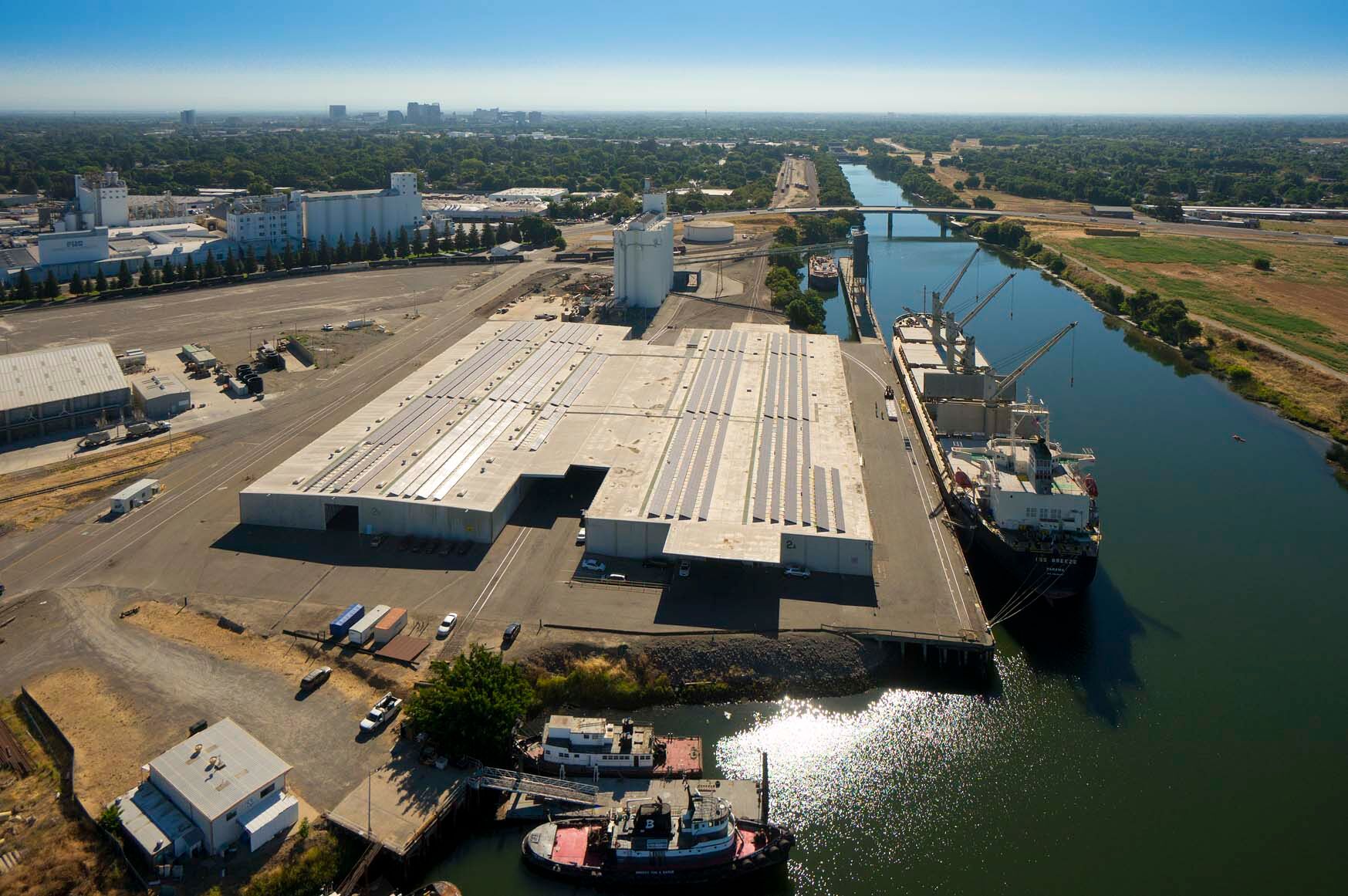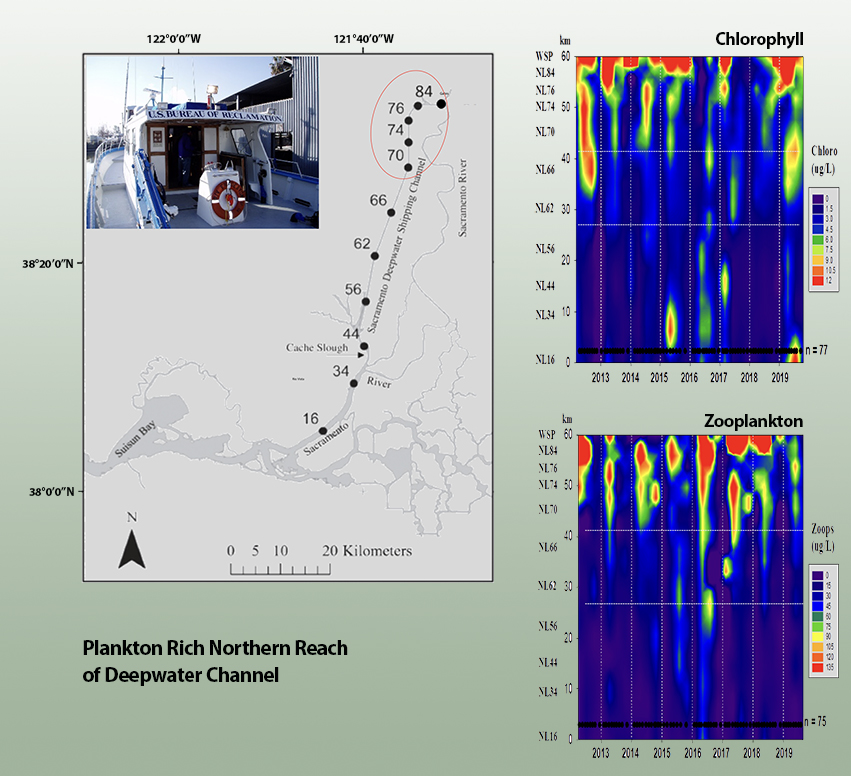
The learned doctors attending the bedside of the Sacramento-San Joaquin River Delta agree on one thing: the patient is not doing well. What ails it, many students of the case suggest, is dehydration: the perennial artificial drought induced by withdrawals of water for human use, whether pulled from feeder rivers or extracted from the Delta itself. The obvious prescription — that society moderate its demands — is politically very hard to fill.
Recently, though, attention has turned to what might be called a comorbidity: malnutrition. Delta waters simply don’t generate enough basic food, in the form of phytoplankton, to sustain the food chains extending to salmon, sturgeon, and smelt. Compared with the problem of thirst, this hunger might actually be a little easier to assuage — if we look for answers in the right, and sometimes unexpected, places.
The diverse floating organisms called phytoplankton build themselves from sunlight and from minerals found in the water. No shortage of solar radiation here. Delta waters have become clearer of late, which was predicted to induce a plankton bloom but did not. The limiting factor, in this part of the world, seems to be nitrogen. Due to upstream dams and agricultural practices, the Sacramento River no longer brings down much of this building-block substance.
Another ingredient in phytoplankton growth is time. Plankton mass may double daily, but the curve rises slowly at first. If nutrients float past too quickly, there’s no time to use them. The modern Delta is a streamlined place, adapted to moving water, not to hoarding it. Whatever nitrogen does find its way in locally, as at the regional sewage treatment plant at Freeport, is hurried out toward San Francisco Bay. (The Bay is thought to have too much of the stuff, but that’s another story.)
“The correct amount of nutrients in water bodies in not zero,” observes Randy Dahlgren of UC Davis. As a proxy for nutrients, we measure chlorophyll. About 10 parts per billion, Dahlgren says, is a good chlorophyll number, nowhere near the excess called eutrophication. In summer, much of the Delta shows readings of 1-3 ppb.
There are some remoter corners of the system, though, where food is not limiting and phytoplankton grows robustly. Researchers are pondering how to expand these oases and distribute local surpluses to impoverished regions. One such fertile spot, the Yolo Bypass, has been studied in depth for decades now. Another, on researchers’ radar for less than ten years, is the Sacramento Deep Water Ship Channel.
The Channel is a paradox. Opened by the Army Corps of Engineers in 1963, it provides a 26-mile shortcut from the river near Rio Vista to the Port of West Sacramento. Thirty feet deep, arrow-straight for miles, barren of bank, roiled by massive vessels carrying rice out and supplies such as fertilizer in, the channel seems the very opposite of an idyllic Delta slough. Yet this utilitarian ditch behaves in some ways like an aboriginal side channel. It grows plankton. It holds healthily cold water in its depths. And it has proved to be a refuge for Delta smelt. “In the last few years, the channel has been the only place where smelt have been caught in appreciable numbers with any consistency,” says Erwin Van Nieuwenhuyse of the U.S. Bureau of Reclamation.

An interesting place. Yet the long-running Interagency Ecological Program ignored it. The California Department of Fish and Wildlife took its first samples for smelt in 2009. The real research effort dates only to 2012, when Van Nieuwenhuyse and his Bureau colleagues, “out of complete curiosity,” took their research vessel Compliance up the channel for an initial tour.
They found a waterway in three distinct segments. The southern part has strong tidal movements. behaving much like the adjacent river. In a middle section, the tidal rhythm fades and syncopates, stirring up mud and creating a “turbidity maximum”; this is the place to look for smelt. The northern reach was once connected to the upper Sacramento River by a lock for barges, but Stone Lock shut down for good in 2000. Now this segment is like a long, skinny lake, out of reach of the tides but accidentally freshened through a little rift in the bulkhead that was installed above the disused lock structure. The northern tip turns green each spring with algae, making onlookers in West Sacramento think “pollution.”
Pollution, to a biologist, is often only chemicals that are out of place. The problem with these blooms is not that they occur. It is that they stay put too long. The organic matter produced here doesn’t wash down to the middle reach, where animal species might fatten on it. Instead it sinks to the bottom and decays, using up oxygen and locking up nutrients in bottom muds. (Too little circulation, we see here, can be as bad for plankton as too much.)
This ambiguously promising state of affairs stands to change, as authorities debate plans to reconnect the upper channel with the Sacramento — or to separate the waters forever.
The city of West Sacramento owes its existence to levees. As it stands, the leaky bulkhead is a flaw in the protective ring. The Army Corps of Engineers has offered a plan to fix this chink in the armor, closing the gap with 550 more feet of conventional dike. An application for federal funds, for the specified purpose, is pending.
But the city, which now owns the lock along with a section of channel, seeks to make this spot an attractive recreation site and a hub of urban redevelopment. A permanently stagnant pool behind a levee would be a poor centerpiece. Encouraged by the Bureau of Reclamation, the city has been looking at alternatives that would improve, not eliminate, the connection to the Sacramento. If more than the present trickle were allowed to pass, this infusion could make the upper end of the channel more appetizing. It could also, food web researchers note, send more phytoplankton downstream.
Before the pandemic interrupted the planning, a consensus seemed to be forming around an alternative that would install four gated culverts allowing flows of up to 700 cubic feet for second. This is enough capacity to allow a careful manipulation of the food supply. “You would let it cook,” says Van Nieuwenhuyse, “and then push it down.”
If and when federal money comes through, a full-dress National Environmental Policy Act (NEPA) study, comparing several options, will ensue. Among those options, ship channel researchers hope, will be a yet more ambitious idea. They would like to see Stone Lock restored to a state in which a much wider range of flows could be allowed to pass into the ship channel. Like the culvert option, this plan would permit phytoplankton management downstream. But it could do more. Bigger pulses of water could push floating foodstuffs clear out of the southern end of the channel and into a wider reach of the western Delta.
And there’s another tantalizing possibility. A properly restored connection could give green sturgeon and Chinook salmon a new path to and from the sea. Both young fish headed for the ocean and adults bound upstream to spawn might take this route, avoiding what have been called the “death traps” of the Central Delta.
This is a case where local government finds itself the steward of a regional restoration opportunity. Any new plan, observes West Sacramento’s Katie Yancey, “requires full cooperation and advocacy” from the city, the associated but distinct flood control agency, and likely from the independent Port of West Sacramento as well.
Higher level agencies, of course, will also have their say. The State Water Resources Control Board may well treat the reconnection as a new diversion. Arguably, a water right existed when Stone Lock was functioning, but the records that could quantify it are nowhere to be found. “We literally don’t know how they operated or how much water went down there,” Van Nieuwenhuyse says. He calculates that perhaps 50,000 acre-feet a year would be rerouted. Compared with other adjustments proposed to benefit the Delta ecosystem, he argues, this would be a moderate change.
Indeed many questions remain. But any treatment that could even marginally help the long-declining Delta seems worth probing in full.
Top Photo: Port of West Sacramento at the northern end of the shipping channel. Photo: Port of West Sacramento